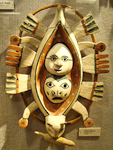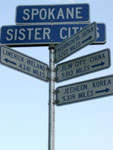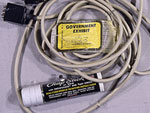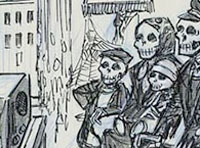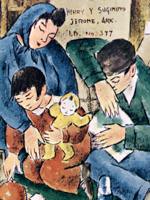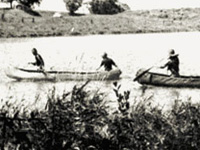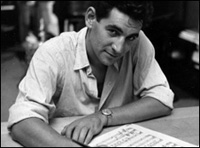My History at School

Access 7 activities which introduce the evidentiary and narrative aspects of history to young students. Students familiarize themselves with these topics by exploring their own past school experiences.
This collection of activities found on the Bringing History Home website introduces first graders to important historical concepts. Through exploring the history of their time at school, students learn about topics such as chronology and historical context as well as how to identify and question different types of primary sources. While these concepts may seem fairly sophisticated for first or second graders, the activities introduce them in accessible and engaging ways. There are seven activities that make up this instructional unit. Each activity can stand alone as a single class lesson or can be combined with others for a multi-day lesson or unit. The first activity asks the question, "What is history," and distinguishes between fictional stories and stories about things that actually happened. Understanding history as a story is a central theme throughout the plan, and the subsequent activities focus on the centrality of evidence in creating historical stories.
Activities three, four, and five introduce students to various types of evidence historians use to make sense of the past, through examining school artifacts such as a newsletter and cafeteria menu. In the final activity, students work as a class to construct a mind map about the history of their year at school. Students are then asked to draw a picture that illustrates one of the concepts from the mind map. Finally, students can be assessed by asking them to identify types of evidence that can provide particular types of information about the school. With a focus on making connections to students' experiences and teaching them that history is a story based on evidence, these clear and kid-friendly activities are an elegant way to introduce key aspects of history to young elementary students. Designed for first graders, these activities can be useful for both younger and older students.

Yes
Introduces students to core characteristics of the historical discipline.
Yes
Yes
However, teachers must find text-based artifacts about their school (e.g. a newsletter) to use in the lesson.
Yes
Students are asked to analyze multiple pieces of evidence in order to construct a history of their time at school.
Yes
Students are introduced to sourcing and are asked to consider source information in several activities. See this example. Questions are used to demonstrate the close reading of multiple kinds of sources.
Yes
A very accessible introduction to the idea that history is more than just a set of facts.
Yes
Yes
Includes an assessment activity and rubric.
Yes, but no estimated times are provided for instruction.
A few activities rely on specific texts but substitute texts can be used.
Yes
